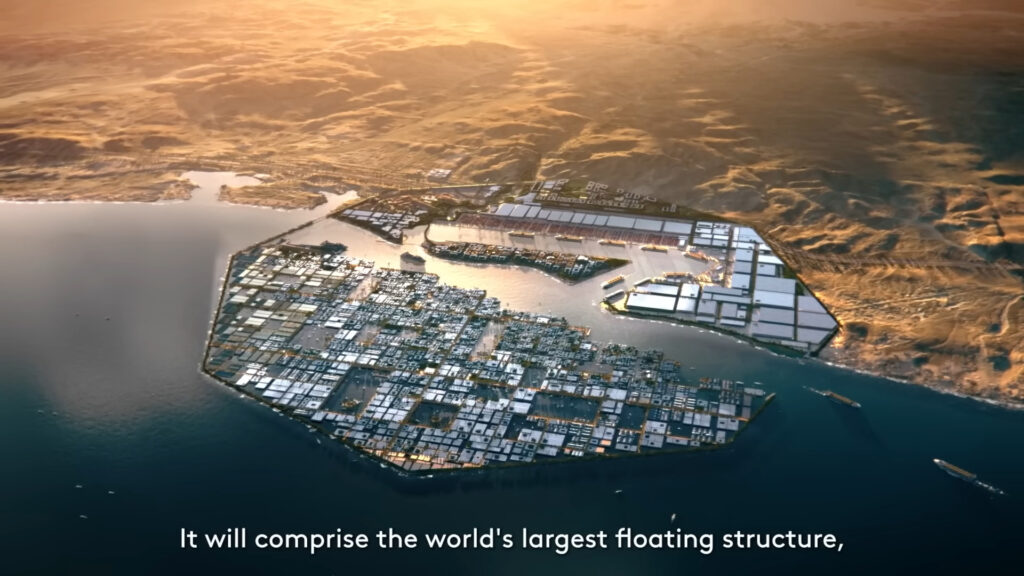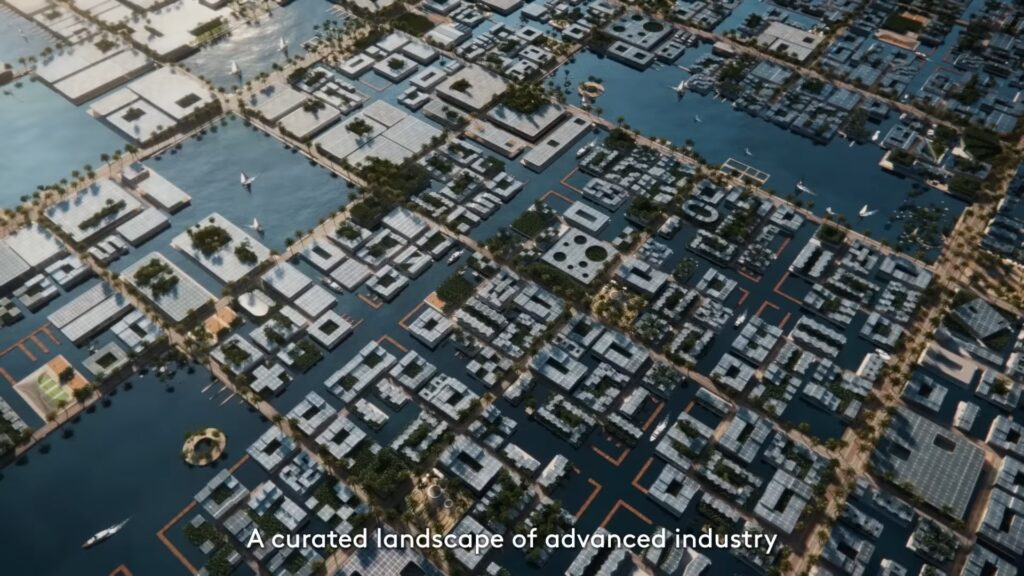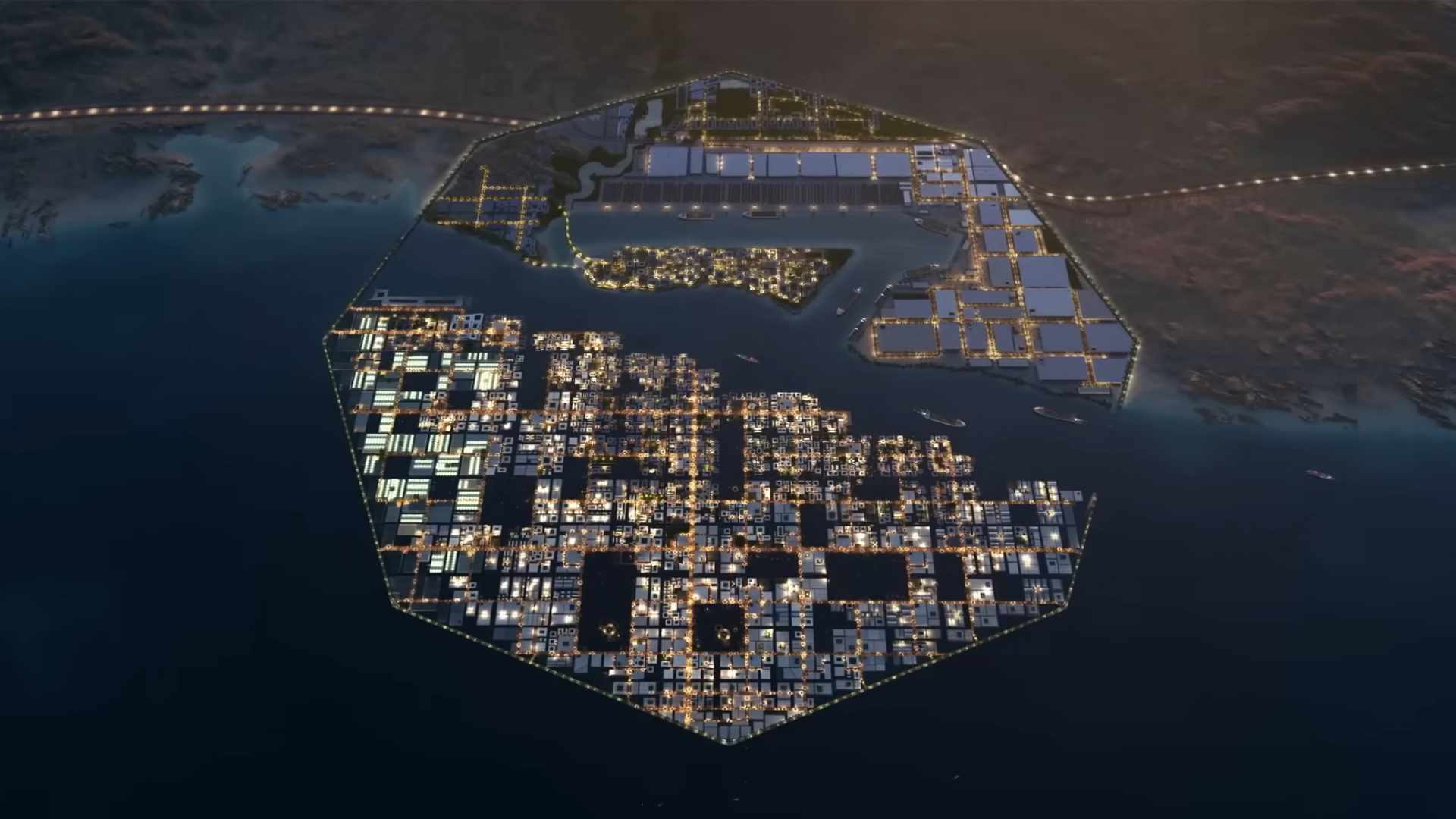Spectacular port project, but also floating city, Oxagon must be an ultra-modern logistics hub, thanks to the use of AI and data. The project, currently under construction, is already controversial.
A floating city, a port, an industrial and research and development center, a place for green energy production… Oxagon is an ambitious project. The Ubrain project, which is under construction in Saudi Arabia, is part of the Neom initiative, a huge area of the country dedicated to building the city of the future. The Line, the 170 km long city, as well as Trojena, a ski resort in the desert, or even Leyja and Epicon, ultra-luxury hotel projects which promise to be harmful to the environment, are also part of of Neom.
Oxagon must be the maritime and industrial part of Neom, located on the coast of the Red Sea, in the north of the country. The city was announced in 2021, and is to be completed by 2030.
A city, a port, a factory and an automated logistics hub
Oxagon takes its name from its shape: the city resembles a giant octagon. It will be divided into several segments, each housing a specific sector. It must be said that the project concerning Oxagon is vast and ambitious. The city must accommodate:
- an industrial center with factories and R&D spaces, focused on “ renewable energies “, ” autonomous and sustainable mobility “, ” modern construction ” And ” water desalination and wastewater management » ;
- an innovation and research center, which must be equipped with “ state-of-the-art laboratories ”, which will welcome researchers and students, with a view to developing solutions “ climate change, and food and water shortages » ;
- a port, a logistics hub and a supply chain “ fully automated using artificial intelligence ”, in order to allow deliveries in record times and a “ connectivity with global trade routes » ;
- a city, sheltering “ thriving communities », which will offer numerous quality amenities for its residents, with gardens, shops and sports facilities. Above all, ” By integrating data into city planning, merchants will be able to anticipate residents’ shopping needs, providing an unrivaled and seamless experience », Promises the Neom site.
The promotional video shows images of vertical farms, modern structures that should help power at least part of the city. The whole thing must be built on immense floating plates – even if it is never explained how these will be built, nor how they will be arranged and installed on the sea.

A controversial city
The video clearly emphasizes the need to fight climate change and protect the environment, including “ virgin waters ” of the region. Yet the project itself risks causing environmental problems.
First of all, boats, and more particularly the container ships that Oxagon wishes to accommodate, pollute enormously. The latter emit carbon dioxide, nitrogen oxide, and sulfur oxides, particles which generate atmospheric pollution. There is also the issue of “degassing” in the open sea, an illegal but very common practice of dumping wastewater, still containing oil residue, into the sea.


Building a port next to maritime reserves housing rare and protected species means taking the risk of exposing them to even more pollution, which is not in the direction of their preservation.
Finally, Oxagon must become the “ largest floating structure in the world ”, according to Neom — but this particularity also raises questions. First of all, it is never specified how Oxagon will float, and how the floating plates will support all the structures will work. It is just specified that “ Oxagon’s design centers on squares filled with water and connected by small channels ”, without any other indication.


Will these plates really float? Will they have to be attached to the seabed to support their load? What will the materials be? How will they be produced? At what cost? Is this even possible, on such a scale? Questions at the moment awaiting a clear answer from the project promoters.
Finally, there is the question of the use of data and artificial intelligence. It is specified numerous times in the Oxagon presentation text, on the Neom website, that the city will make massive use of AI, but above all, the personal data of its residents. Oxagon will be a “ cognitive city that will not only adapt to your needs, but will learn to anticipate them ”, and thanks to the use of this data, businesses “ will be able to anticipate residents’ purchasing needs “.
There is no information on how this data will be captured and processed, or stored, nor who will have access to it, how and for what purpose. At a time when personal data is rightly seen as the new “black gold”, the uncertainty that remains over the use of this information and AI constitutes another big black spot in the Oxagon project.
If you liked this article, you will like the following: don’t miss them by subscribing to Numerama on Google News.
